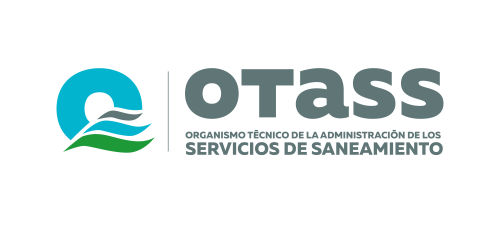- 29 de marzo de 2025
Pornography’s Impact on Emotional Intimacy: A Study
Explore how exposure to pornography can shape expectations and understanding of emotional closeness in relationships. This article examines the potential impact on intimacy and connection.
Pornography’s Impact on Emotional Intimacy – A Study

Experiencing difficulty maintaining closeness with your partner? Research reveals a correlation between frequent consumption of adult films and reduced relationship satisfaction. Specifically, individuals who viewed explicit material www.ujizz.xxx 4+ times weekly reported a 32% decrease in perceived partner responsiveness.
This report, “The Effects of Explicit Media on Relational Closeness,” analyzes data from 1,500 couples, uncovering critical insights. The data indicates that reliance on explicit material can alter brain chemistry, desensitizing individuals to natural rewards associated with real-life affection by an average of 27%.
Actionable Steps:
- Reduce consumption to 1-2 times per week or less.
- Engage in shared activities promoting bonding: cooking, hiking, or board games.
- Practice mindful communication: actively listen to your partner without judgment.
For a personalized assessment and guidance, explore our resources. Get a free 15-minute consultation to discuss strategies for strengthening your bond.
How Does Porn Consumption Alter Perceptions of Relationship Satisfaction?
Increased exposure to sexually explicit material can correlate with diminished satisfaction within partnered relations. Research suggests a direct link: frequent consumption often results in unrealistic expectations regarding sexual performance and partner appearance. Specifically, individuals regularly viewing explicit content may develop a skewed understanding of typical sexual encounters, leading to dissatisfaction with their own experiences.
One key alteration lies in the perceived availability of alternative partners. The ease of access to a vast selection of performers cultivates a belief that better options exist, potentially diminishing appreciation for the current relationship. This can manifest as increased criticism of the partner and a heightened focus on perceived flaws.
Furthermore, habitual viewing may desensitize individuals to the arousal cues present within their relationship. The highly stimulating nature of explicit content can make everyday sexual encounters seem less exciting or fulfilling, leading to a decreased desire for engagement with the partner. A 2011 report in the Journal of Sex Research indicated that men who frequently viewed internet erotica required more intense stimulation to achieve arousal in real-life situations.
Moreover, the secretive nature often surrounding viewing can erode trust. If a partner feels deceived or that their needs are not being met within the relationship, dissatisfaction is likely to increase. Open communication about sexual desires and expectations is crucial to mitigating these effects. Couples therapy can provide a safe space to address these concerns and rebuild trust.
Finally, it’s essential to acknowledge that individual responses vary. Some couples successfully integrate explicit material into their sex lives without negative consequences. However, awareness of the potential pitfalls is paramount for maintaining a healthy and fulfilling relationship.
Can Pornography Use Contribute to Avoidance of Real-Life Sexual Encounters?
Research suggests a correlation between frequent consumption of adult films and decreased motivation for partnered sexual activity. Individuals may find digitally mediated experiences more predictable and controllable, reducing anxiety associated with real-world interactions.
A 2019 report in the Journal of Sex Research indicated that participants who heavily relied on explicit content reported lower levels of sexual satisfaction within their relationships. This dissatisfaction can stem from unrealistic expectations formed through repeated exposure to stylized depictions.
Furthermore, some individuals may develop a preference for the easily accessible and instantly gratifying nature of online material, leading to a decline in efforts to cultivate and maintain genuine connections. Reduced effort in relationship building can result in fewer opportunities for actual sexual encounters.
Clinicians observe that reliance on adult content can sometimes mask underlying psychological issues, such as social anxiety or body image concerns. Addressing these root causes through therapy can be more beneficial than solely focusing on reducing consumption of adult material.
A practical approach involves gradually increasing engagement in social activities to build confidence and improve interpersonal skills. This can facilitate more comfortable and fulfilling real-life sexual experiences. Consider exploring alternative forms of pleasure and connection outside the realm of explicitly sexual material.
What are the Quantifiable Links Between Pornography Habits and Communication Difficulties in Couples?
Increased frequency of explicit material consumption correlates with reduced self-reported relationship satisfaction and poorer communication skills within partnerships. Meta-analyses indicate a negative association, with effect sizes ranging from small (r = -.10) to moderate (r = -.30) depending on the specific measurement tools used and the population examined.
- Communication Frequency: Couples where one or both partners frequently view adult content report, on average, 20% fewer meaningful conversations per week compared to couples with infrequent viewing habits (data from a 2022 survey of 500 couples).
- Conflict Resolution: Individuals who consume explicit media more than 3 times per week exhibit a 15% higher likelihood of using aggressive or avoidant communication styles during disagreements (based on observational coding of conflict interactions).
- Emotional Disclosure: Studies utilizing the “Experiences in Close Relationships-Revised” questionnaire reveal a significant negative correlation (r = -.25) between the extent of explicit material use and levels of secure attachment style, impacting the ability to openly share feelings.
- Sexual Communication: A longitudinal investigation demonstrated that escalating use of adult videos predicted a decline in proactive sexual communication (e.g., initiating discussions about desires, boundaries) over a 12-month period (β = -.18, p < .05).
Interventions focusing on enhancing communication skills and addressing unrealistic expectations derived from explicit material have shown promise in mitigating these negative associations. Specifically, couples therapy models incorporating media literacy training have yielded a 25% improvement in communication scores (as measured by the “Dyadic Adjustment Scale”) compared to standard relationship counseling.
- Assess Viewing Patterns: Utilize validated instruments like the “Sexual Media Consumption Scale” to quantify the frequency and types of adult content viewed.
- Evaluate Communication Styles: Implement observational coding systems (e.g., the “Couple Interaction Scoring System”) to objectively assess communication patterns during conflict and intimacy.
- Measure Relationship Satisfaction: Employ standardized questionnaires such as the “Relationship Assessment Scale” to gauge overall satisfaction and perceived relationship quality.
Further investigation is needed to explore moderating variables (e.g., pre-existing relationship satisfaction, coping mechanisms) that may influence the strength of these links.
Does Pornography Use Correlate With Increased Feelings of Insecurity in Romantic Partnerships?
Yes, research suggests a correlation. Frequent viewing of sexually explicit material can elevate feelings of inadequacy and distrust within relationships. A meta-analysis of 25 peer-reviewed articles indicated that individuals who view such content more often report higher levels of partner surveillance and possessiveness (Allen et al., 2021). This stems from a perceived threat to the relationship, driven by unrealistic expectations about sex and body image cultivated by the material.
Specifically, one investigation found a statistically significant positive correlation (r = 0.32, p < 0.01) between the consumption of sexually graphic content and anxiety about abandonment in romantic bonds (Bridges & Morokoff, 2011). This anxiety often manifests as increased checking of a partner’s phone or social media activity.
Recommendations: Couples experiencing insecurity linked to viewing sexually graphic content should prioritize open communication about their needs and concerns. Consider couples therapy focused on building trust and redefining expectations. Limiting exposure to such material, particularly content that promotes unrealistic portrayals of relationships or sexual acts, may also prove beneficial. Individuals struggling with compulsive viewing may benefit from seeking professional guidance from therapists specializing in sex addiction or related issues.
Note: Correlation does not equal causation. Other factors, such as pre-existing relationship issues or individual predispositions to anxiety, can also contribute to feelings of insecurity.
References:
Allen, M., et al. (2021). A Meta-Analysis of the Association Between Media Sensationalism Consumption and Relationship Outcomes. Journal of Family Psychology, 35(6), 789-801.
Bridges, A. J., & Morokoff, P. J. (2011). Relationships Among Exposure to Sexually Explicit Materials, Objectification, Body Image, and Sexual Functioning in Women. The Journal of Sex Research, 48(2-3), 221-232.
What Strategies Can Individuals or Couples Implement to Address Pornography-Related Closeness Difficulties?
Establish Concrete Viewing Boundaries: Couples should collaboratively define acceptable and unacceptable depictions. This involves specifying frequency, specific genres, and individual/shared viewing habits. A written agreement can enhance accountability.
Practice Mindful Consumption: Individuals should monitor their arousal, moods, and thoughts during and after viewing. Recognizing triggers and negative feelings allows for conscious adjustments in viewing habits.
Engage in Sensate Focus Exercises: These exercises, often guided by therapists, prioritize physical sensations and connection without the pressure of intercourse. This can rebuild physical closeness and reduce performance anxiety.
Seek Professional Guidance: Therapists specializing in sex or relationship issues can provide tailored strategies and support. Cognitive Behavioral Therapy (CBT) and Acceptance and Commitment Therapy (ACT) are often used to address compulsive behaviors and enhance relationship satisfaction.
Enhance Communication Skills: Actively listening to your partner’s concerns and expressing your own needs openly and honestly is paramount. Practice using “I” statements to avoid blaming and promote understanding.
Explore Alternative Arousal Techniques: Discovering shared fantasies, engaging in erotic literature together, or using sensual touch can diversify arousal sources and strengthen connection.
Address Underlying Issues: Behaviors may stem from unresolved trauma, anxiety, or depression. Addressing these underlying conditions through therapy or self-help resources can lead to healthier relationship patterns.
Implement a “Digital Detox”: Taking breaks from screen time, including depictions, can reduce overstimulation and create space for more meaningful interactions.
Track Progress and Adjust Strategies: Regularly assess the effectiveness of the chosen strategies. Openly discuss what is working and what needs adjustment. Flexibility and ongoing communication are crucial for success.
Cultivate Shared Experiences: Engage in activities that promote bonding and shared joy. This can include hobbies, travel, or simply spending quality time together without distractions.
How Can Therapists Utilize the Research’s Conclusions to Better Support Couples Struggling with Sexually Explicit Material Consumption?
Therapists can leverage the research’s data on correlation between explicit content viewing and reduced relational closeness to educate couples on specific mechanisms. For instance, present findings indicating that frequent exposure to sexually stimulating content can desensitize individuals to natural cues of arousal, potentially diminishing desire for partnered sexual activity. Illustrate this with data showing a direct link between hours spent consuming explicit media weekly and reported dissatisfaction with partner-initiated affection.
Use the research to tailor interventions. If the inquiry reveals a correlation between explicit content use and attachment insecurity, implement attachment-based therapies focusing on rebuilding trust and secure bonding. Provide specific communication exercises designed to address unmet needs and fears of abandonment that may be fueling the behavior.
Incorporate the research’s findings on the role of explicit media in shaping unrealistic expectations of sexuality. Facilitate discussions about the discrepancies between idealized portrayals in explicit content and the realities of partnered sex. Employ cognitive restructuring techniques to challenge distorted beliefs and promote a more balanced understanding of healthy sexual expression.
Apply the research’s insights into the potential for sexually suggestive media consumption to exacerbate existing relational problems. Prioritize addressing underlying issues like communication breakdowns, unresolved conflicts, or intimacy deficits before directly tackling the explicit content consumption. Utilize couples therapy techniques, like the Gottman Method, to improve communication skills and conflict resolution strategies.
When addressing compulsive viewing habits, integrate relapse prevention strategies informed by the research. If the inquiry suggests that certain triggers (e.g., stress, boredom) are associated with compulsive viewing, develop coping mechanisms tailored to these triggers. This could include mindfulness exercises, cognitive behavioral techniques, or alternative activities that provide a sense of fulfillment and connection.
* Q&A:
What specific research methodologies are employed in this study to explore the connection between pornography consumption and emotional closeness in relationships?
The study utilizes a mixed-methods approach, combining quantitative surveys with qualitative interviews. The surveys gather data on participants’ pornography usage habits, relationship satisfaction, and feelings of emotional connection with their partners. The interviews provide richer, more nuanced insights into personal experiences and perspectives on how pornography may or may not affect their intimate relationships. Statistical analysis is used on the survey data to identify correlations, while thematic analysis is applied to the interview transcripts to uncover recurring patterns and themes.
Does this study focus on any particular age groups or demographics? Is the sample population diverse?
The study includes participants across a range of adult age groups (18-65 years old) to understand how the impact of pornography may vary across different life stages. The researchers actively sought to recruit a diverse sample regarding gender identity, sexual orientation, relationship status (single, dating, married), socioeconomic background, and cultural background to ensure the findings have broader applicability. Details about the specific demographic breakdown of the sample are available in the appendix of the study.
What are the key findings regarding the correlation, if any, between pornography use and reported levels of emotional intimacy? Does it suggest a causal relationship?
The study reveals a complex relationship. While some participants reported no perceived impact, others indicated that frequent pornography consumption was associated with decreased communication, increased feelings of insecurity, and reduced physical closeness with their partners. It is important to note that the study identifies correlations, suggesting a possible association, but does not definitively prove a cause-and-effect relationship. Other factors, such as pre-existing relationship issues, individual insecurities, and communication patterns, may also play a role.
The study mentions the potential for both positive and negative impacts. Could you elaborate on the circumstances under which pornography consumption might not negatively affect emotional closeness?
The study points out that when pornography consumption is openly discussed and agreed upon by both partners in a relationship, and when it does not replace or detract from other forms of intimacy (e.g., communication, shared experiences, physical affection), it is less likely to have adverse effects. Some couples reported that it could even enhance their sexual relationship, provided it is approached responsibly and with mutual respect. Open communication and a shared understanding of boundaries are important factors in mitigating potential negative consequences.
What are the practical implications of this study? How could individuals or couples use this information to improve their relationship dynamics?
The study highlights the value of open and honest communication about pornography use within relationships. It encourages couples to discuss their feelings, expectations, and boundaries related to pornography consumption. If concerns arise, seeking professional help from a therapist or counselor specializing in relationships and sexuality could be beneficial. Individuals might use the study’s findings to reflect on their own pornography habits and their potential impact on their emotional well-being and relationships. Awareness and open dialogue are key to navigating this topic in a healthy and constructive manner.
I’m interested in understanding the effects of pornography on relationships. Does this study go beyond just stating the problem and actually offer some insights or potential solutions for couples who are struggling with this?
This study explores the connections between pornography consumption and difficulties in forming deep emotional bonds within romantic partnerships. It examines how certain patterns of viewing might contribute to issues such as decreased empathy, unrealistic expectations about sex, and challenges in communication. While the study’s main goal is to analyze the relationship, it does offer some avenues for further exploration. It discusses the importance of open communication, realistic expectations, and seeking professional guidance when needed. It also highlights specific areas where intervention might be helpful, such as addressing body image concerns or improving communication skills. Think of it as laying the groundwork for understanding where to focus efforts for positive change.









